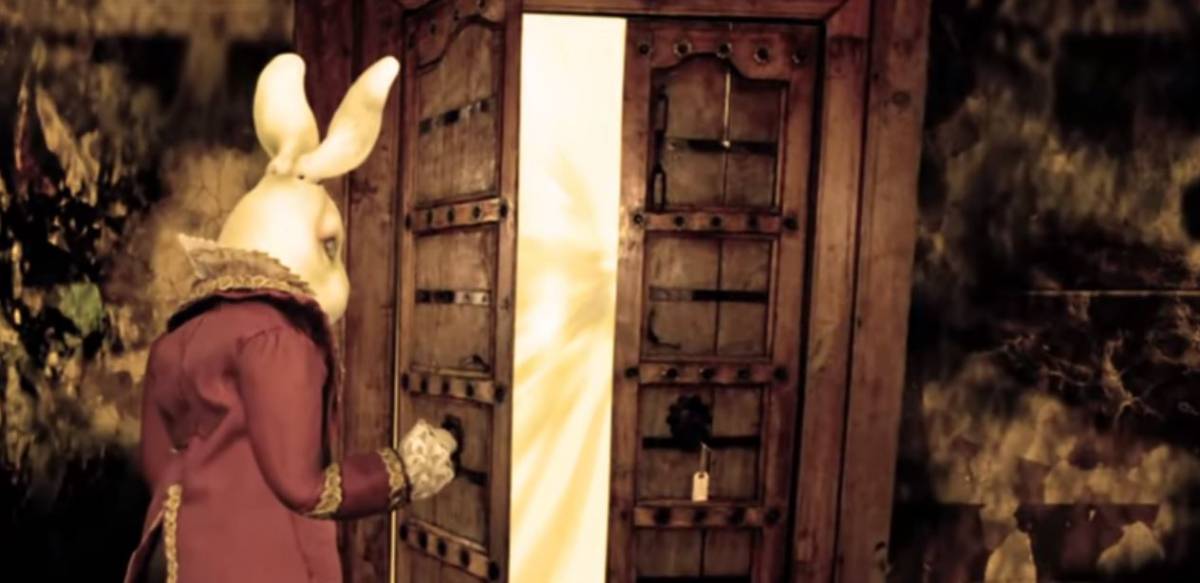The 1865 novel Alice’s Adventures in Wonderland and its sequel Through the Looking-Glass, and What Alice Found There (1871) have both been the subjects of numerous adaptations in various media, Jan Švankmajer’s 1988 hybrid film being a cult favorite and Tim Burton’s infamous duology being one of the most recent attempts to revive these pieces of 19th century prose.
A serious contender for the most bizarre revamp of Lewis Carroll’s writings comes from the world of Japanese indie animation, which is hardly a surprise, considering that Japan has always been a fertile ground for the wonderfully outré cinematic offerings. Kentaro Hachisuka’s crowd-funded debut anime employs a quaint, yet effective collage technique to convey the story which chronicles another of Alice’s subconscious trials and which, on the other hand, is the weakest or rather, the least surreal point of this (45 minute long) fantasy.
A pretty straightforward good vs. evil narrative plays out like a feverish fairy tale conceived by a gothic Lolita girl whilst playing with her friends, the characters feeling like archetypes at best and cardboard cutouts at their worst (well, they actually are cutouts, so it’s hard to blame them for being what they are). We see Alice implored by White Rabbit to follow him once again and stop Darkness (much different than the unforgettable Devil-like antagonist of Legend) from bringing both of their worlds to the end. In a meta twist, she is fully aware that Alice in Wonderland is just a book, so initially she is reluctant to abandon her reality, but once the bunny reappears and her sister disappears, there’s no more time for shilly-shally.
After her fall through the hole (in the chest of a creepy, monumental bust), we are introduced to the titular Dreamland which is replete with landscapes looking as if straight out of Hieronymus Bosch’s or the Brothers’ Grimm nightmares, with the Mad-gone-Sad Tea Party occurring in a lush garden where Humpty and Dumpty lie squashed. The familiar inhabitants of this whimsical realm, from the Hookah-Smoking Caterpillar to the Red and the White Queen (with carousels for the legs!), are all crafted as porcelain, oft morbidly cute dolls by Mari Shimizu, then photographed and animated via stop-motion. It is obvious that the visuals are done on a very tight budget, yet they are aesthetically pleasing and not to mention refreshing, all by virtue of the veteran puppeteer’s great attention to detail. And let’s not forget a loving homage to the prominent silhouette animator Lotte Reiniger by the way of The Seventh Seal ending.
Also commendable is the superb voice acting by the experienced cast tasked with breathing life into expressionless puppets, as well as the darkly ethereal score composed by the musician working under the pseudonym of “arai tasuku”, with the suitably odd opening and ending themes performed by the neo-classical duo Kokusyoku Sumire (lit. Black Violets). However, the most beautiful figure on the film’s aural canvas is a melancholic, gently haunting track Dear Alice sung by Itaru Baba.
As you might have already guessed, Alice in Dreamland is not easy to recommend, but if you’re looking for something that is not your typical J-animation fare (or simply want to be Jabberwock-ed), you might find it right here.
Some of the coverage you find on Cultured Vultures contains affiliate links, which provide us with small commissions based on purchases made from visiting our site. We cover gaming news, movie reviews, wrestling and much more.



